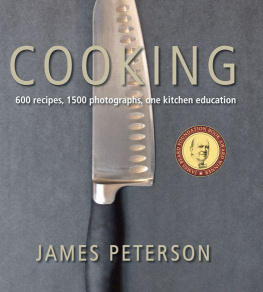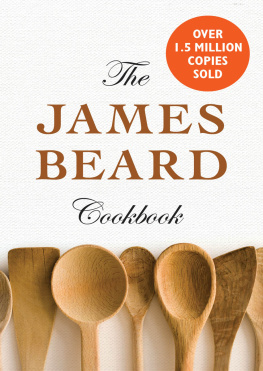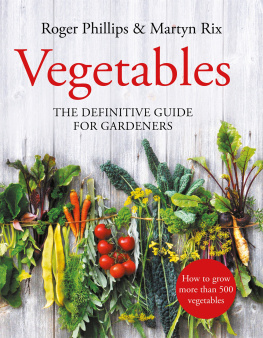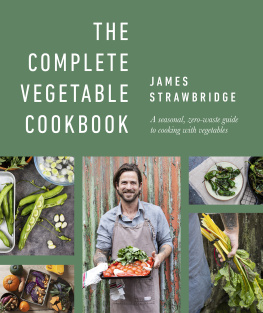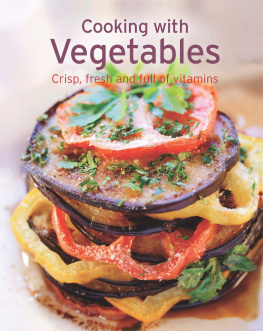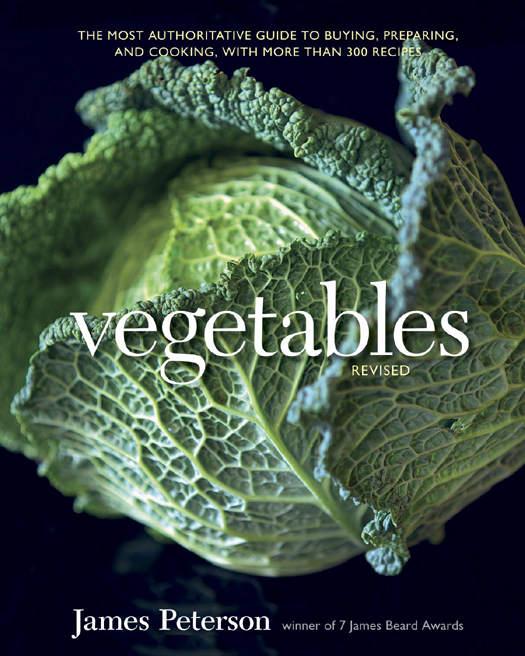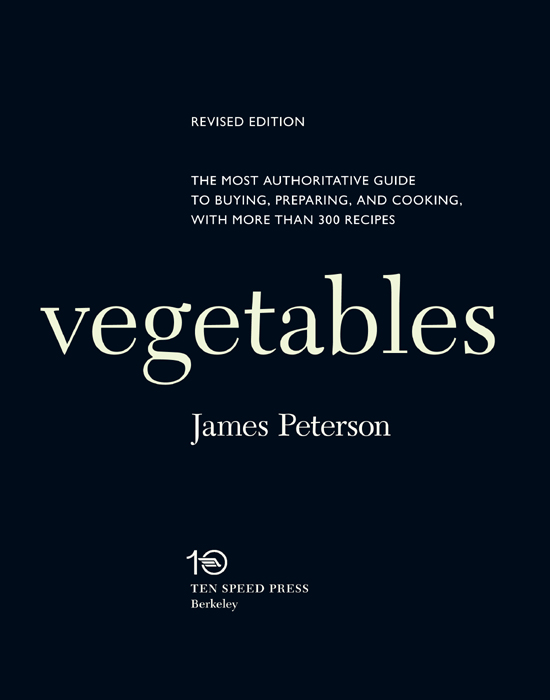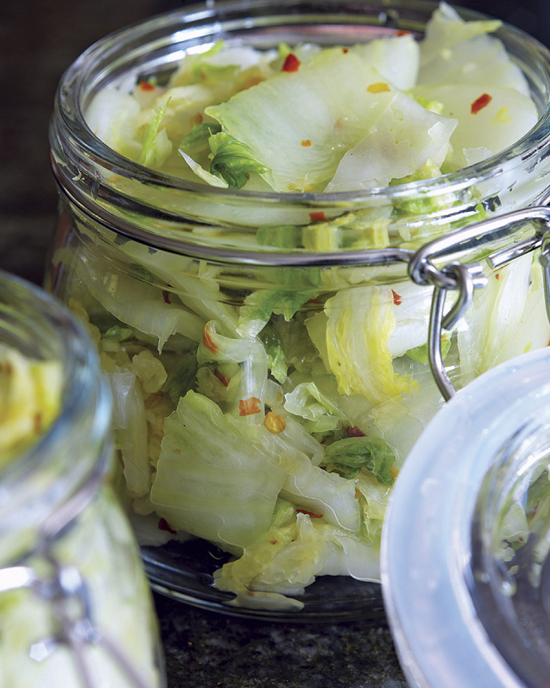
Copyright 2012 by James Peterson
All rights reserved.
Published in the United States by Ten Speed Press, an imprint of the Crown Publishing Group, a division of Random House, Inc., New York.
www.crownpublishing.com
www.tenspeed.com
Originally published in the United States by William Morrow and Company, Inc., New York, in 1998.
Ten Speed Press and the Ten Speed Press colophon are registered trademarks of Random House Inc.
Library of Congress Cataloging-in-Publication Data
Peterson, James.
Vegetables / by James Peterson. Rev. ed.
p. cm.
Includes bibliographical references and index.
1. Cooking (Vegetables) I. Title.
TX801.P49 2012
641.65dc23
2011027973
eISBN: 978-1-60774-205-0
v3.1
Contents
PART I
Skills for Preparing and Cooking Vegetables
PART II
The Vegetables: A to Z
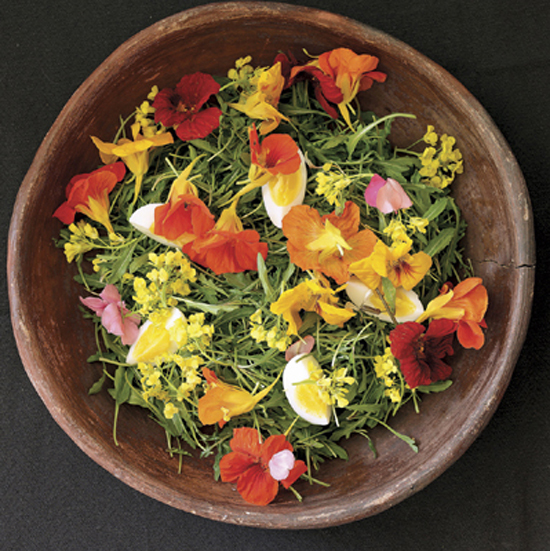
Introduction
WHEN I SET OUT TO WRITE the first edition of Vegetables in 1996, I went to the local bookstore to look at other vegetable books. I almost gave up when I saw hundreds of books about vegetables and several shelves full of vegetarian books, which made up one of the largest sections in the store. But as I flipped through the books, and after giving my newly conceived vegetable project a little thought, I realized that what I wanted to write was different. In my perusal of the competition I found few recipes for the simplest dishesthings like glazed carrots, mashed potatoes, sauted spinach, and steamed asparagusdishes to cook on a Wednesday evening with a house full of kids and after a day at the office. Some of the books extolled the virtues of shopping at the local farmers market (who could disagree?), but they didnt mention those winter days when the only source of vegetables may be the supermarket. And while its great to cook with lovely fresh or even heirloom vegetables, its more of a challenge to make something tasty out of a few beans or a bag of supermarket mushrooms. So I decided to write a book that would include not just new or unfamiliar dishes but also the tried-and-true dishes that many of us grew up with. I also wanted to liven up many of these dishes by adding new twistslike folding pesto or roasted garlic into mashed potatoes or pine nuts and raisins to sauted spinach.
At the same time, I decided to include simple new ways (new to us but traditional in other places) to cook less-familiar vegetables, such as kale, Swiss chard, fennel, and escarole. Many of these dishes were based on memories of meals in great restaurants or of travels to foreign countries; some were last-minute inventions made up after out-of-control buying sprees at the farmers market. The purpose of some of these recipes was, of course, to provide new tastes and combinations, but also to offer simple, flavorful, and lighter alternatives to traditional methods.
Its now fourteen years since the publication of the first edition of Vegetables, and as books do, Vegetables went out of print. I (along with my publisher, Ten Speed Press) saw an opportunity to republish Vegetables with full-color photography. We have now included photographs of most of the vegetables and many of the recipes.
In addition to new color photography, this revised edition contains more than thirty new vegetable entries, fifty new recipes, and a new section on herbs. Chopping and dicing have been more thoroughly explained, and the book now has a thirty-page techniques section that explains (and sometimes shows) every method you might need to cook a vegetable. The new vegetable entries are mostly for Asian vegetables, although a few European ones (salsify, crosnes) have made their way in. The herb section covers all the common herbs, as well as lesser-known varieties (rue, epazote).
In the years since Vegetables was first published, American tastes have changed. We have stirred away from a richer and more subtly flavored European-influenced cuisine, to the direct flavors, bold variations in texture, and bright colors of Asian cooking. To accommodate this, I have spent many a morning in Chinatown trying to unravel the mysteries of Asian vegetables. The results of these endeavors are found throughout the book as Ive taken some of these exotic and not-so-exotic beans and lentils, gourds, herbs, and rhizomes home to my kitchen laboratory for experimentation. Many of them I have cooked using traditional techniques and flavorings, but others have called out for completely new treatments.
This new edition of Vegetables is divided into two sections, the extensive technique section followed by an alphabetical listing of the vegetables themselves. Once youve read the technique section, the techniques called for in the recipes should all be familiar. Hopefully, with the knowledge of those techniques, youll be able to improvise with both familiar and unfamiliar vegetables. For example, the section on gratinsprobably better known as casserolesanalyzes which liquids (cream, bchamel sauce, broth, coconut milk, and so on) are most appropriate. It shows how cooking times and temperatures influence the final result and how various toppings can be used to create a crust. Armed with this knowledge, a new idea or recipe for a gratin should be easily accommodated and mastered.
But the new Vegetables is not just about techniques. It also explores the flavor combinations used in many of the worlds great cuisines. Unlike many fusion dishes that have no tradition behind them, the dishes in Vegetables are firmly grounded in the cultural habits of various peoples working in the kitchen.
In short, armed with this new edition, you can embark on new culinary adventures and feel free to improvise in the kitchen. Once you have the basic understanding of how each vegetable behaves, coupled with a familiarity with the techniques that are used in its preparation, your flights of fancy will be well grounded in the realities of those treatments best suited to your preparations.

PART I
Techniques for Preparing and Cooking Vegetables
Knife Skills
BEFORE EMBARKING ON A RECIPE, improvised or otherwise, its essential to have at least a rudimentary mastery of those most basic knife skills: chopping, finely chopping or mincing, cubing, and dicing.
Basic Chopping Techniques
Chopping is the most straightforward of knife skills. To chop a vegetable is to cut it in a random way. Youre not dicing or cubing it, but rather simply hacking away at it until it has the size that you want.
To chop an herb such as parsley, use the longest knife you have. A long knife, because you can align what youre chopping next to the blade, is the most efficient tool because you end up chopping more at once. To chop an herb or small vegetable, hold the knife in your right hand (assuming youre right handed) with the end of the blade pressing against the cutting board. This pressure holds the knife in place and allows you to establish a kind of spring action in which the knife blade springs back as you chop. Use your left hand to continually feed what it is youre chopping under the knife blade. Dont use your left hand to hold down the top of the knife, a common error among even professional chefs. Some recipes call for fine versus coarse chopping. Fine chopping is used for vegetables that are meant to cook very quickly or to release the maximum of their flavor in a relatively small period of time. Vegetables are cut into cubes such as macdoine and brunoise when they show up in the finished dish and the dish is somewhat formal.


